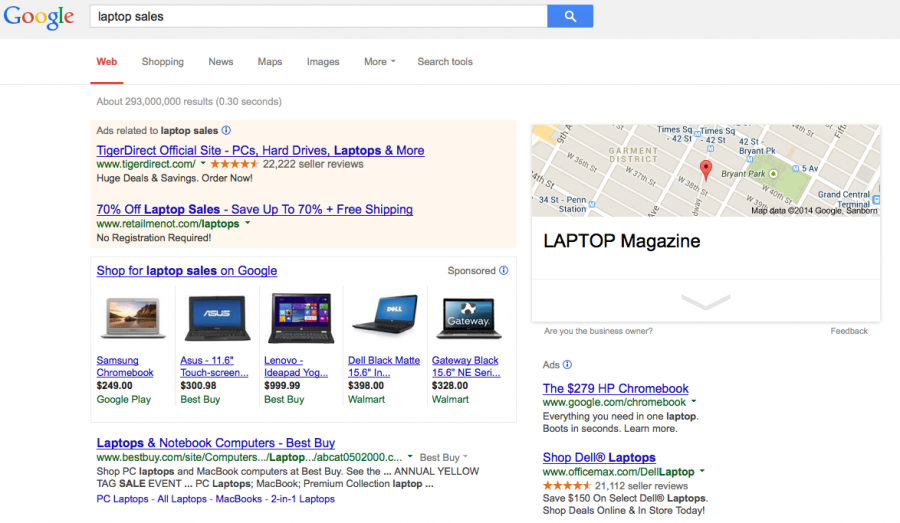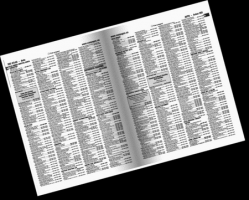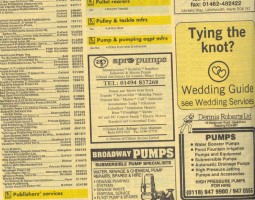The history of Google search is as fascinating a business and technology story as it is a story in human behavioral evolution in a rapid period of time. Having spent the better part of the previous 300 years in the Industrial Revolution we were in the earlier stages of what is now know as the Information Age when these two guys Larry & Sergei (Larry Page and Sergei Brin) came along with a little box promising to answer anything we may type into it.
Of course the little box was located on a website and that website was Google and is known today as a search engine. The modern consumer Internet and world wide web really started to gain traction in the early nineties and soon after companies started popping up all over the place promising to index and make better sense of all these new websites and individual pages that were being created all over the world. Brands like Lycos, Alta Vista, Excite and even Yahoo were conceived and the web was very much in the wild west days as many different ideas were put forward as to how to sort and rank all of this new information that was popping up every day.
At the same time, two Graduate students at Stanford, Larry Page and Sergei Brin saw this new world and were working on their vision of how better to sort and rank this information based on a user query. Their research paper put forward the notion of PageRank cutely named both after one its authors but also apt given they were essentially ranking webpages. The basic premise behind the original PageRank was that the amount of links that any given page or site domain got was the best reflection of its authority and value on a given subject. This was the original Google search algorithm back in 1998 but it has since evolved so much that it is only a multitude of who knows how many tens, hundreds or more factors in ranking search results.
Figure 1: Google Annual Total Search Queries

Above you can see how dramatic the growth has been from under 10,000 searches per day back in 1998 which equates to about 1 search per every 1,700 people per year. In 2013 we had almost 6 billion searches per day which is almost 1 search per person per day. Given so many people around the world have almost none to zero access to Internet still it probably is fair to say today for anyone with access we are all searching on average once per day (if not more given addition people who have little to no access or choose not to access).
The two big reasons for Google’s success as a search engine given they were a relative late entrant to the space were that unlike the general web philosophy and thinking at the time they;
- Had a very clean search engine page which the text input box as the primary focus and large white spaces rather than the conventional wisdom of the time to be a portal to everything with links to news, other sites, games, email, including imagery, etc. This allowed the user to focus and the page to load far more quickly in an era where almost all consumers accessed the internet via a slow dial up modem. This clean look (and we will focus more on this later) was continued to the results page as well with just the web results and little else.
- Their ranking algorithm and technology was largely seen to be a superior way of organizing information in terms of the most relevant result to a user’s intention. Back in those days, web search result quality varied wildly and often you would have to go to a second and third page of results to get the answer you were looking for or even close to it with other search engines. Google largely seemed to give you not just one but an array of relevant results all on page 1.
Now Search Engines are as much a part of daily life in all areas of society as the phone, electricity and activities like reading itself. And Google with a few exceptions in China, Korea, Japan and Russia mainly is the dominant search engine and even in those markets is a strong number two search engine in terms of market share.
However anyone searching in 2005 or as recent as 2010 let alone 1998 knows that searching on Google presents a very different experience today than it has in the past. And I am not even largely talking about things like mobile search and apps or voice based search, although they play some part too. It is the idea that the philosophy behind the results themselves have changed as has the visual you see after inputting a search query.
Figure 2: Google Search Page

Clearly gone are the days of just a list of results and now, particularly when we search for something commercial in nature but often otherwise as well, we see not just paid ads but images, maps, ratings and prices all “above the fold” (above the fold meaning what you can see without scrolling). In fact with this particular search you because all of the new menu at the top you can only see one regular web result without swiping down the page.
Even in mobile versions of Google search on smartphones this switch to paid listing has hit new extremes. Wyzant reported back in July 2013 (although now taken down maybe for fear of search engine ranking reprisal) an article say it would take 4 finger scrolls on the iPhone before they say their first organic result for some searches. More recently SEO blog and optimization product expert, Moz reported in their 2014 future glimpse of Google search, various ways Google are trialling to make Google paid ads to look more like organic listings in both desktop and mobile browser and app experiences.
Wordstream did a 2012 study after the launch and growth of Google PLAs (paid listing ads which primarily used by retail with images and prices of inventory), Google enhanced campaigns (way for Google to get more ads on to mobile devices and increase the Cost per Clicks or CPCs they earned for those ads) and all the recent Google purchases like ITA software in Travel and Zagat for Hospitality and Local listings. They found;
- For shopping searches up to 85% of the screen real estate was for paid listings
- 65% of search results clicks for queries with commercial intent (i.e. “buy red shoes”) were for paid ads
- Almost half of the population couldn’t distinguish between paid and unpaid listings
I dub this overall effect the change of Google Search from the Whitepages to the Yellowpages.
The Whitepages is/was a book with lots of listings of people with the occasional bold paid listing kind of like back in the day when the left side was all organic results and the right side was paid on Google search. This era is largely over.
The Yellowpages is/was a book where most, and on some pages all, of the listings are paid and they are various sizes with pictures, colors, different fonts and a whole host of other things to make a given ad stand out. This is increasingly what Google search looks like today
The reality is Google is currently the 3rd largest company in the US behind Apple and Exxon Mobile and just ahead of Microsoft. Their earnings, revenue and click traffic growth have only been increasing for many years as has their innovation and success in other areas beyond Search like with Android, Maps, YouTube, Display, Email, Browsers and even forays into Wearable Technologies. Google since its infancy has tested any changes religiously and only implemented changes where it has shown benefit to them (along with the user). Meanwhile other competitors branding themselves as more “pure” search engines like DuckDuckGo have come on board in recent years but relatively little mass adoption or even awareness.
Therefore the bottom line is maybe in 2014 in the current paradigm of search maybe we subconsciously want Google to be more like the Yellowpages and that is what we are getting!


